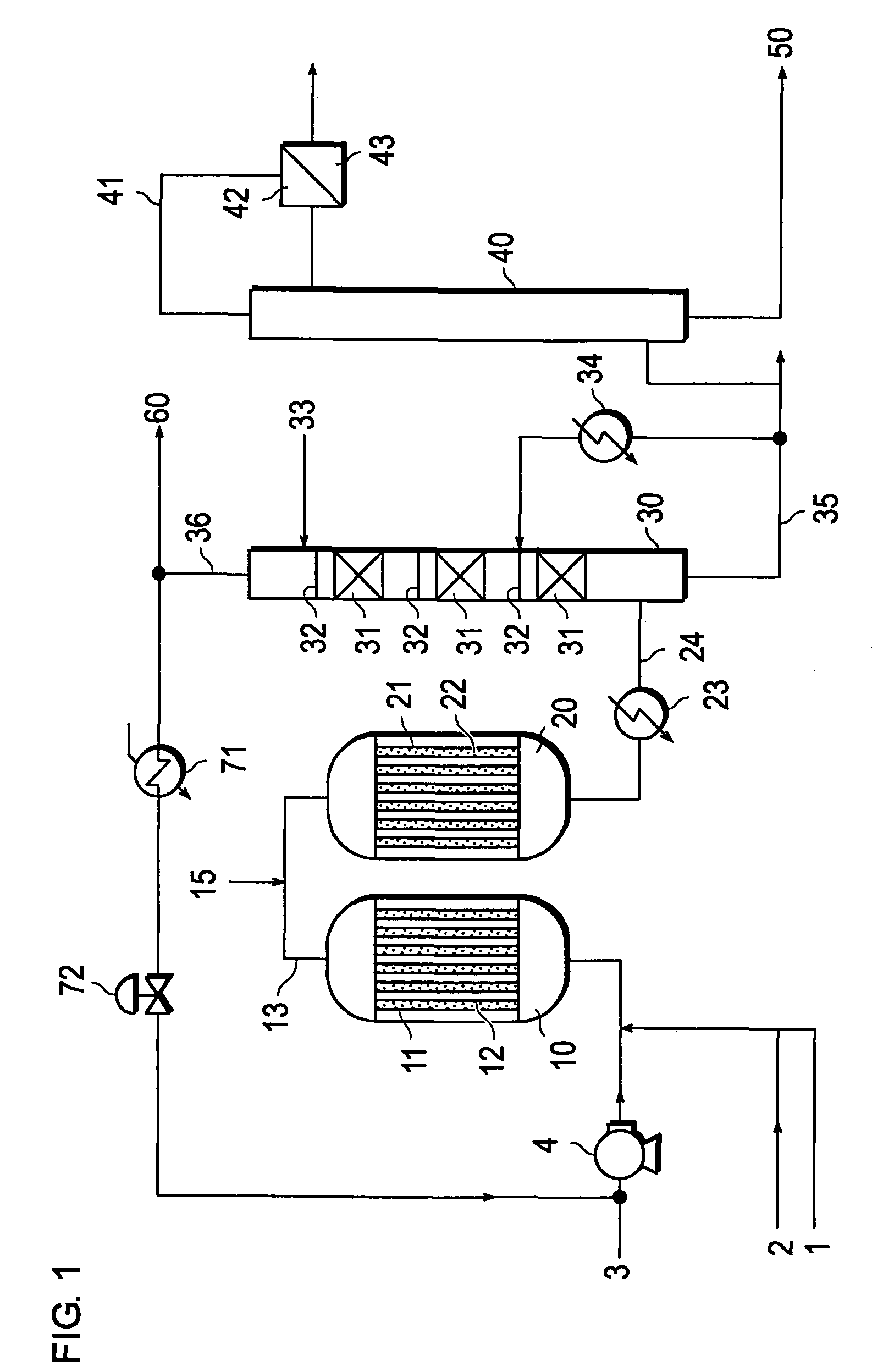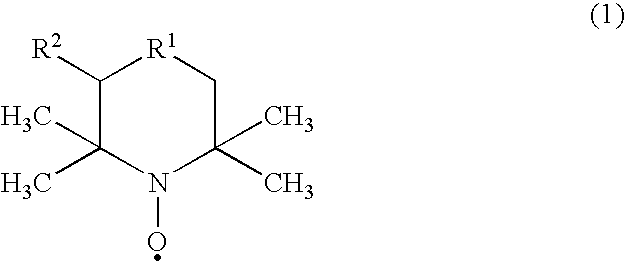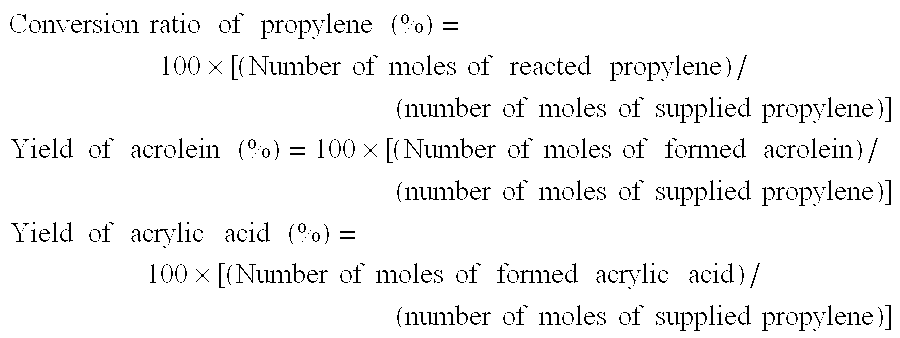Method for production of acrylic acid
a technology of acrylic acid and production method, which is applied in the preparation of carboxylic compounds, organic chemistry, chemistry apparatus and processes, etc., can solve the problems of reducing the yield of the product, degrading the quality of the acrylic acid produced, and difficult control of these factors, so as to achieve the effect of reducing the number of polymers, and reducing the cost of production
- Summary
- Abstract
- Description
- Claims
- Application Information
AI Technical Summary
Benefits of technology
Problems solved by technology
Method used
Image
Examples
reference example 1
Preparation of Catalyst
[0083]A molybdenum-bismuth type catalyst was prepared as the catalyst for use in the first reaction zone by following the procedure of Example 1 of the official gazette of JP-A-2000-325795. It will be designated as Catalyst (I) herein below. A molybdenum-vanadium type catalyst was prepared as the catalyst for use in the second reaction zone by following the procedure of Example 1 of the official gazette of JP-A-08-206504. It will be designated as Catalyst (II) herein below.
[0084]Conversionratioofpropylene(%)=100×[(Numberofmolesofreactedpropylene) / (numberofmolesofsuppliedpropylene)]Yieldofacrolein(%)=100×[(Numberofmolesofformedacrolein) / (numberofmolesofsuppliedpropylene)]Yieldofacrylicacid(%)=100×[(Numberofmolesofformedacrylicacid) / (numberofmolesofsuppliedpropylene)]
example 1
[0085]A reaction apparatus which was formed of two lines of reaction tubes acting as a first reactor and a second reactor each furnished with a jacket for circulation of thermal medium and measuring 25 mm in inside diameter and 3,500 mm in length, the gas outlet of the first reactor being connected with a pipe having a nozzle to the gas inlet of the second reactor was used. The first reactor was packed sequentially in the direction from the gas inlet side to the outlet side thereof with (1) ceramic balls only having an average diameter of 5 mm, (2) a mixture formed by mixing the catalyst (I) and ceramic balls having an average diameter of 5 mm at a volume ratio of 70:30, and (3) the catalyst (I) only in the order mentioned to form layers measuring 300 mm, 700 mm, and 2,300 mm in length respectively.
[0086]The second reactor was packed sequentially in the direction from the gas inlet side to the outlet side thereof with (1) ceramic balls only having an average diameter of 5 mm, (2) a ...
example 2
[0092]The same reaction apparatus as used in Example 1 was adopted. The first reactor was packed sequentially in the direction from the gas inlet side to the outlet side thereof with (1) ceramic balls only having an average diameter of 5 mm, (2) a mixture formed by mixing the catalyst (I) and ceramic balls having an average diameter of 5 mm at a volume ratio of 55:45, (3) a mixture formed by mixing the catalyst (1) and ceramic balls having an average diameter of 5 mm at a volume ratio of 70:30, and (4) the catalyst (I) only to form layers measuring 200 mm, 500 mm, 500 mm, and 2,200 mm in length respectively.
[0093]The second reactor was packed sequentially in the direction from the gas inlet side to the outlet side thereof with (1) ceramic balls only having an average diameter of 5 mm, (2) a mixture formed by mixing the catalyst (II) and ceramic balls having an average diameter of 5 mm at a volume ratio of 75:25, and (3) the catalyst (II) only to form layers measuring 300 mm, 700 mm,...
PUM
| Property | Measurement | Unit |
|---|---|---|
| Concentration | aaaaa | aaaaa |
| Mass flow rate | aaaaa | aaaaa |
Abstract
Description
Claims
Application Information
 Login to View More
Login to View More - R&D
- Intellectual Property
- Life Sciences
- Materials
- Tech Scout
- Unparalleled Data Quality
- Higher Quality Content
- 60% Fewer Hallucinations
Browse by: Latest US Patents, China's latest patents, Technical Efficacy Thesaurus, Application Domain, Technology Topic, Popular Technical Reports.
© 2025 PatSnap. All rights reserved.Legal|Privacy policy|Modern Slavery Act Transparency Statement|Sitemap|About US| Contact US: help@patsnap.com



